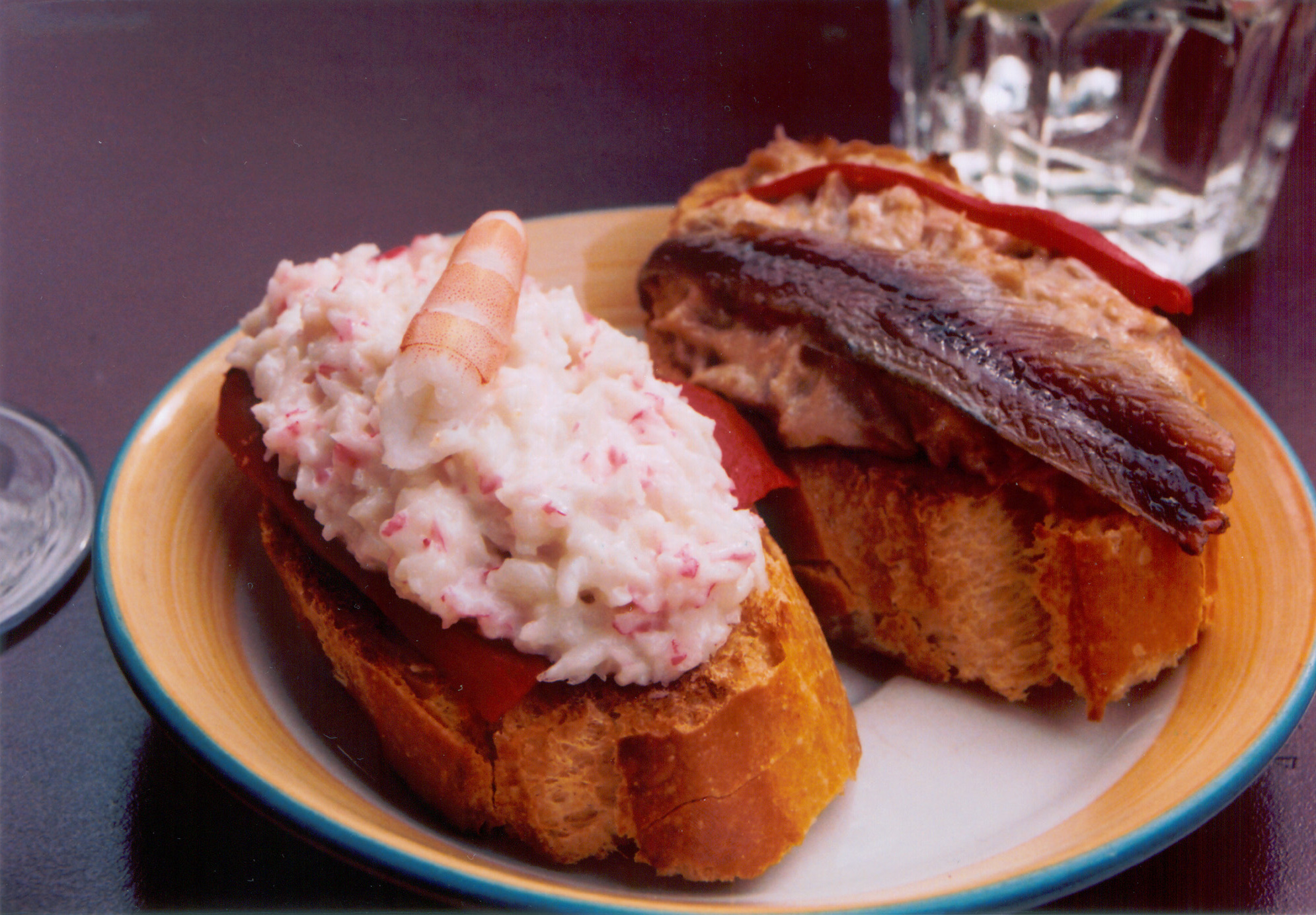Basque cuisine
The Basque cuisine is the local cuisine of the Basque Country. It has elements from the Spanish and French cuisine.
Properties
The Basque cuisine is largely influenced by the proximity to the sea, fish and seafood dishes are popular meals. It is generally consumed more meat from beef than pork. Chicken is also popular and are in some towns and villages, though rarely, found horse butchers.
Beef, such as fillets and cutlets, grilled in the Basque Country. For the German flavor of roasted meat is cooked rather quite bloody, practically raw and crispy on the outside inside.
Another peculiarity of Basque cuisine is the virtual absence of spices or herbs, but this does not mean that Basque dishes are bland. Instead, the natural flavor of the ingredients is emphasized also the Basques emphasize a high quality of the components used.
In addition to the traditional Basque cuisine, the New Basque cuisine has developed along the lines of the French nouvelle cuisine.
Kitchen and cooking in the Basque Country has a high priority and many Basque chefs are known to the general public.
Meals
The meals during the daily routine and their times are similar to those of Spanish cuisine. The inhabitants of the region Gipuzkoa eat up to an hour earlier than usual in Spain.
Dishes from the Basque Country
- Angulas, elvers
- Bacalao al pil-pil, cod with a sauce of its own gelatin
- Bacalao a la Vizcaina, Stock fish in chili sauce
- Caracolillos or Karakelas, sea snails
- Chipirones en su tinta, squid in its own ink
- Cooked Chorizo a la Sidra, chorizo in cider
- Chuletón de Vaca, rib of beef
- Cuajada, a dessert made from sheep's milk
- Goxua, a sweet dessert made of custard, cake, whipped cream and caramel
- Marmitako, tuna and potato stew
- Referred Merluza en Salsa Verde, hake in a sauce of oil, flour, peas and parsley, as " green sauce "
- Pastel Vasco (French Gateau Basque ), a cake made from shortcrust pastry with cream filling from Iparralde, the French Basque country
- Piperrada, a Pepper dish
- Porrusalda, leek and potato stew
- Txangurro, crab (Spanish centollo )
- Tortilla ( de patata ), potato omelette
Regional specialties
In the Basque Country there are a number of regional products, which are also used in regional dishes.
- Alubias de Tolosa, black beans from Tolosa place
- Chorizo de Orozko, spicy sausage from the place Orozko
- Idiazabal cheese, a mature sheep cheese
- Pimientos de Gernika, green peppers from Gernika place
- Txakolí, a dry white wine from the region Getaria
- Izarra, herbal liqueur from the Bayonne
- Rioja wine from Álava
- Jambon de Bayonne, air-dried ham from Bayonne
Tradition and special features
Sociedad Gastronómicas
In the Basque Country Friends come in clubs regularly for cooking and subsequent eating. These clubs are called Koch companies or Sociedad Gastronómicas. Tradition dictates that only men may belong to a Sociedad. The company has its own club house, which is equipped with a large kitchen and a dining room. Depending on personal preference, the members themselves or with other cooking together, in each case there is a relaxed atmosphere with food, drink and song. Some members visit the Sociedad even daily.
Koch companies are to be found throughout the Basque Country. You are in the province of Guipúzcoa ( the region around San Sebastián ) is particularly common and alone in San Sebastián, there are about 150, the oldest were founded in the 19th century. In Bizkaia, the companies are referred to as Txokos [' tʃokos ].
Sidrerien
Sidra is cider, which is very tart in the Basque Country. In the past, the Basques covered beginning of the year with a supply of Sidra and so there is still the tradition to try the natural product cider from different barrels and then the best tasting shop. The cider -producing farms that Sidrerien, open in the cider season, from mid-January to Easter. For apple tasting menu is traditionally prepared that prepares the necessary thirst: Stockfischomelett, cod with peppers, rib steak and for dessert goat cheese with quince jelly ( Membrillo ) and walnuts. During the meal, the guests drink the cider directly on the barrel
In addition to classic Sidrerien that an ostrich industry work similar, there are Sidrería restaurants that open throughout the year outside the Sidrasaison. Some serve the cider from bottles and many of barrel dummies. Sidrerien are located in Gipuzkoa in the rural suburbs of San Sebastián. Most of the classic are in Astigarraga, Hernani and Oiartzun. Sidrería restaurants are found throughout the Basque Country and Navarre.
Pinchos
Many pubs and restaurants in the Basque Country have Pinchos, a variant of Spanish tapas. It is about small meals, which are usually consumed to drink as an aperitif. See the main article Pincho.
Celebrity chefs and restaurants
- Arzak Juan Mari Arzak of San Sebastián (3 stars by Michelin Guide )
- Akelarre by Pedro Subijana in San Sebastián (3 stars)
- Casa Nicolasa by José Juan Castillo in San Sebastián
- Karlos Arguiñano in Zarautz
- Martín Berasategui in Lasarte in San Sebastián (3 stars)
- Restaurante Guggenheim in Bilbao, also led by Martín Berasategui
In particular, Karlos Arguiñano, but also Pedro Subijana and José Juan Castillo, in addition to her work within the new Basque cuisine known for her cooking shows on Spanish television in which they present simple and tasty dishes to try at home.









